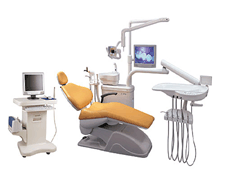المقالات
Micro-Dentistry

The widespread use of fluoride has made the surface of teeth so hard that the process of dental decay has actually changed. Before the preventive use of fluoride, decay usually attacked the exposed grooves of a tooth, where it could be found with a dental explorer or x-rays. But today, fluoride has so hardened the outer enamel layer that cavities have gotten smaller and are much more difficult to diagnose.
Cavities now sometimes penetrate into the softer dentin layer through seemingly intact enamel. It's important to catch and treat all cavities early while they're still in the hard outer enamel layer, because once they reach the inner dentin layer, cavities grow much more quickly. If they reach the pulp chamber, we'll have to perform a root canal.
Micro-dentistry is a new science in dentistry that takes advantage of specialized tools and techniques to find and restore small, hard-to-find cavities. We can remove the smallest possible amount of tooth structure and place strong bonded fillings, while often avoiding the need for dental anesthetic.
Micro-dentistry is a new dental science that uses special tools, decay-detecting dyes and air abrasion, to find, remove and restore these tiny new hidden areas of decay.
As a first step in micro-dentistry, we may apply a red or green dye to stain areas of decay. We can then use air abrasion to gently clean the pits and expand the narrow grooves so that we can continue to test with cavity detection dye. Using special, small instruments, we can then bond one of the new white filling materials, or place a sealant.
